You can make homemade pizza with a minimum of tools, or you can buy the entire yuppie menagerie (and let's face it—if you're a foodie, you probably want the toys). Below is a brief rundown of the different options available. Since I'm a relative beginner to the process, I've also linked out to a few in-depth reviews.
Before we jump in, I'd like to address what I've found to be essentially two different types of homemade pizzas—the short-cut version (or as Jamie Oliver calls it, the "Cheat's Pizza") and the traditional yeast and kneading method. There are a few shades of grey in between, but it seems to me (thus far) that these are the two basic schools.

Check out the chart above, but in a nutshell, the "Cheat's Pizza" method generally uses A) self-rising dough B) a food processor instead of your hands and C) a cast iron-pan to "par-fry" the dough (read more about this process here and below). The traditional method requires a pizza stone, which increases the heat—(home ovens can't reach anywhere near the 800 degree mark achieved by commercial pizza ovens).
FRESH INGREDIENTS
The best part about making pizza at home is the fresh ingredients. I love using basil I've grown right in the garden, and fresh mozzarella is the best! The ingredients are easy—just pick and choose what you like. However, one thing I haven't quite mastered is the sauce. I plan on playing around with a few different recipes as I go—I have a few listed in the forum, please add any recipes that you've tried and like to the master list.
PIZZA STONE OR CAST-IRON PAN
I just bought my first pizza stone and I can't wait to use it! Up until this point I have been using simple metal pans or a cast-iron pan for the "Cheat's" method mentioned above.
The cast-iron pan is handy for "par-frying" a self-rising, flattened dough on the stove top before you stick it in the broiler with the toppings. This method allows the dough to cook evenly, achieves a crispy bottom (though careful, it's easy to char the bottom if you aren't paying attention), and finally, the toppings and cheese only need 3-4 minutes to melt perfectly on top. Sounds amazing, right? Why would you want to mess with yeast, or hand kneading, or a pizza stone?
Well, the crust is good. But it's not heavenly like other crusts I've had at Mario Batali and Nancy Silverton's Mozza in LA, or Jim Lahey's Co Pane in NYC. It's thin and crispy, but not my ideal: soft and airy with a crispy exterior.
I've also tried Lahey's no-knead pizza dough recipe, which skips the self-rising dough (time does all the work for you; read more here), skips the food processor, but is still a bit of a cheat—the resulting crust is quite good, but not perfect. Again, thin and crispy.
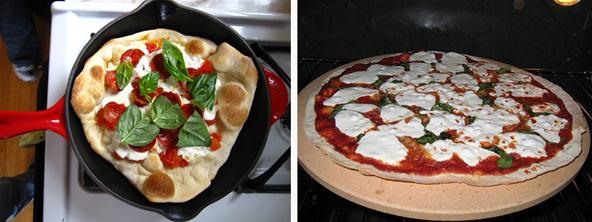
If you're satisfied with "quite good", you can stick with the simple metal pans and the cast-iron method (shown to the left above), but if you want to join me on my more traditional pizza-making endeavors, get yourself a stone (pictured to the right above). There is a wide range of pricing; I followed these tips from Cooks Illustrated before I settled on mine (which was about $25):
- Do not choose a stone with a lipped edge—this makes removal a pain.
- Do not choose a stone that you can't carry—some are crazy heavy!
- You can use simple house tiles if you like, which you would arrange and stack in your oven.
For more in-depth information, Serious Eats has a great compare/contrast article on 12 different stones.
FOOD PROCESSOR (OR YOUR HANDS)
More and more recipes I've come across utilize a food processor in the mixing and "kneading" of the dough. I had made a few pizzas prior to this discovery, and it seems hands will suffice if you don't want to splurge on the gadget. However, I'm curious to see if the masters recommend a processor or tabletop mixer.

ROLLING PIN
No matter what, you'll need a rolling pin...

...but this can also be easily substituted with a wine bottle, if you choose.

OPTIONAL: PIZZA PEEL
I'm calling this "optional" because from what I've found so far, pizza peels seem to be outlandishly overpriced, but in truth, I think a peel will make the process a lot easier. If you're cooking on a pizza stone, a pizza peel may be essential, in fact. A pizza peel is a long handled tool with a flat, cutting board-like paddle on the end to deposit and retrieve your pie from the oven.

Handles vary in length (professional restaurants use extremely long handles for their commercial ovens; you will likely need a much shorter handle). I have yet to buy one, but I think it may be unavoidable. Check out Serious Eats' detailed review of the different options available.
UPDATE: YEAST
Oops, I did leave out an essential ingredient, as Gina kindly reminded me below. Once you start to get pro, it's good to dive into the complexities of yeast... whether it be cultivating from the wild, fresh or simply selecting the best store-bought option. For now, I'll likely be using the standard store-bought instant yeast.
That's about it. Did I leave anything out? Let me know below.
Just updated your iPhone? You'll find new emoji, enhanced security, podcast transcripts, Apple Cash virtual numbers, and other useful features. There are even new additions hidden within Safari. Find out what's new and changed on your iPhone with the iOS 17.4 update.



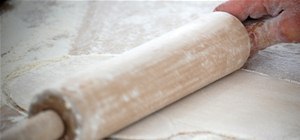
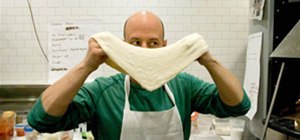

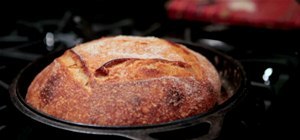



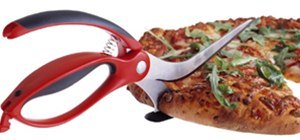

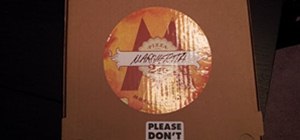
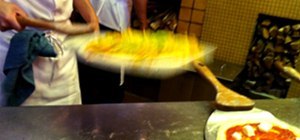
3 Comments
Nice intro, thank you! However, you didn't talk about yeast. I read an interesting essay by Jeffrey Steingarten (food editor of Vogue) in 'The Man Who Ate Everything' about the complexities of cultivating wild yeast. Really fascinating. He talked about how the super pros make a starter yeast, and continue to work from the same yeast from loaf to loaf to loaf. Apparently, this process just makes the bread better and better. If I can find a passage, I'll link to it on the corkboard.
Gina, I've actually read that book, also... and you're right, I should have addressed yeast. For now, I'm overwhelmed by the prospect of variety or even crazier—cultivating it myself. But it's something I'd like to get into someday. For now, I'll work on making a decent crust with store bought yeast. :) However, maybe I'll add an edit above... PS that essay is incredibly interesting. Perhaps I'll transcribe a quote or two tonight in the comment stream.
Ha, I've used a wine bottle to roll out dough before. Too many times, in fact, before I finally gave in and bought a rolling pin. The wine bottle gets messy because you can't hold it evenly, so the dough gets too flat on one side if you're not careful.
Share Your Thoughts